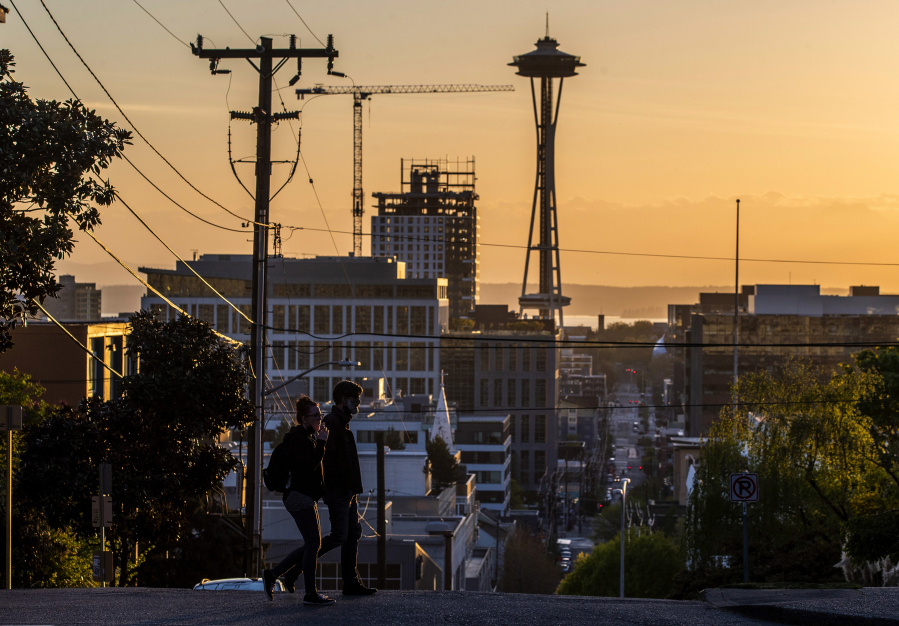One of the most important socio-economic shifts from the 1990s to the coronavirus pandemic was the “back to the city movement.”
Specifically, it was the rejuvenation of central cities after decades of being hollowed out by freeways, suburbanization, and employment fleeing to office “parks” and so-called Edge Cities (Bellevue, Washington, being a good example).
Cities with good bones were especially attractive to young talent.
According to a 2010 assessment in the Harvard Business Review — at the midpoint of the phenomenon — “In 1990, college-educated 25- to 34-year-olds were 12% more likely than others in the U.S. to live within three miles of a central business district. By 2000, they were 33% more likely.”
Retired boomers also found dense, walkable cities attractive. Both cohorts were happy to shed their car-dependency and use transit.
It wasn’t confined to coastal cities (downtown Los Angeles made a spectacular comeback). Austin and Dallas did very well, and continue to show strong return to office work. Dallas has the most extensive light-rail system in the nation. To be sure, Dallas-Fort Worth is also overrun with sprawl.
Oklahoma City saw its population increase by double-digit percentages from 1990 to 2020. It appropriated money for a downtown remake, including turning an old warehouse district into a popular entertainment hub called Bricktown, building a streetcar and restoring Amtrak service. Oklahoma City also bolstered its downtown with the addition of the Thunder, née SuperSonics, which the NBA allowed to be snatched from Seattle and we’re still bitter.
The critical question is whether the trend will continue, post-coronavirus, and in an uncertain future for office work, especially in central business districts? The stakes are extremely high for Seattle, which was a prime beneficiary of “back to the city.”
Now it is beset with rising crime, a large unsheltered population and a City Council majority that is hostile to business, especially Amazon, the city’s largest private sector employer, even as Seattle faces growing revenue gaps.
Mark Muro, a senior fellow at the Brookings Institution and a Seattle native, uses a narrower definition of the time when talent and companies were flowing back to cities.
“The ‘back to the city’ bump right after the Great Recession was an unusual blip that lasted through around 2015 — as millennials were confronted with a bad housing market and job market (thus postponing marriage and homebuying),” he told me in an email.
“After 2015, though, more ‘normal’ suburbanization took hold as the economy (including the tech boom) and housing market picked up. That began to enable more people to move to the suburbs and so helped cool down the city migration. So, in that sense, the ‘back to the city’ boom has been tapering since 2014 or so, even before the pandemic.”
I’ll stick to my more expansive definition, having watched it happen over the years in Cincinnati, Charlotte, Denver, San Diego and even Phoenix. Plus, nowhere more than in Seattle whose ability to reinvent itself and be a talent magnet always wowed me.
(And to be fair, “back to the city” had critics, too, where it led to gentrification).
Now, I wonder.
My colleague columnist Danny Westneat reported that the chief executive of HomeStreet Bank, with 950 employees in a downtown skyscraper, might consider leaving the city because of alarming increases in violent and property crimes. A few losses such as this and Seattle becomes emblematic of a sharp reversal of the city renaissance.
Meanwhile, Seattle Times FYI columnist Gene Balk looked at an intriguing study of how downtowns are recovering based on smartphone activity. The result: Seattle ranked No. 40 out of 62 large American and Canadian cities. Salt Lake City was No. 1 and San Francisco last. Still, Seattle passed 50% of smartphone activity this spring compared with 2019.
According to the Downtown Seattle Association’s Recovery Dashboard, office workers were at 42% of their pre-pandemic levels as of Aug. 7. This was stronger than almost all West Coast peers. Hotel room demand was at 98%.
Richard Florida, the most influential urban scholar since Jane Jacobs, argued in an article this month that great downtowns, at least, can survive and thrive.
Still, “The change is so sweeping that the old moniker ‘central business district’ no longer applies,” Florida wrote. “Today’s downtowns are more aptly considered as central connectivity districts — essential platforms where people socialize, cooperate, and collaborate.”
Seattle is fortunate to have a strong mix that seems to be essential ingredients for connection.
Those include a large and growing residential population in and near downtown, a diverse economy, natural beauty, arts and culture, sports, dining and shopping. All are condensed into this place with abundant transit.
No urban center in the region can lay claim to all of these assets. If they’re the building blocks of the “Central Connectivity District,” then downtown Seattle has more than the foundation already built.
Mayor Bruce Harrell and some City Council members are tackling public safety, along with City Attorney Ann Davison. The recruitment and retention plan for Seattle police is a significant step. But all of this will take time, more time than some small-business owners and residents can afford.
Nationally, “back to the city” doesn’t seem to be in danger of being rolled back, outside of such tragic places as San Francisco.
And in Seattle? Census data remains to be seen, sensible governance must return, and it may take years to know.



